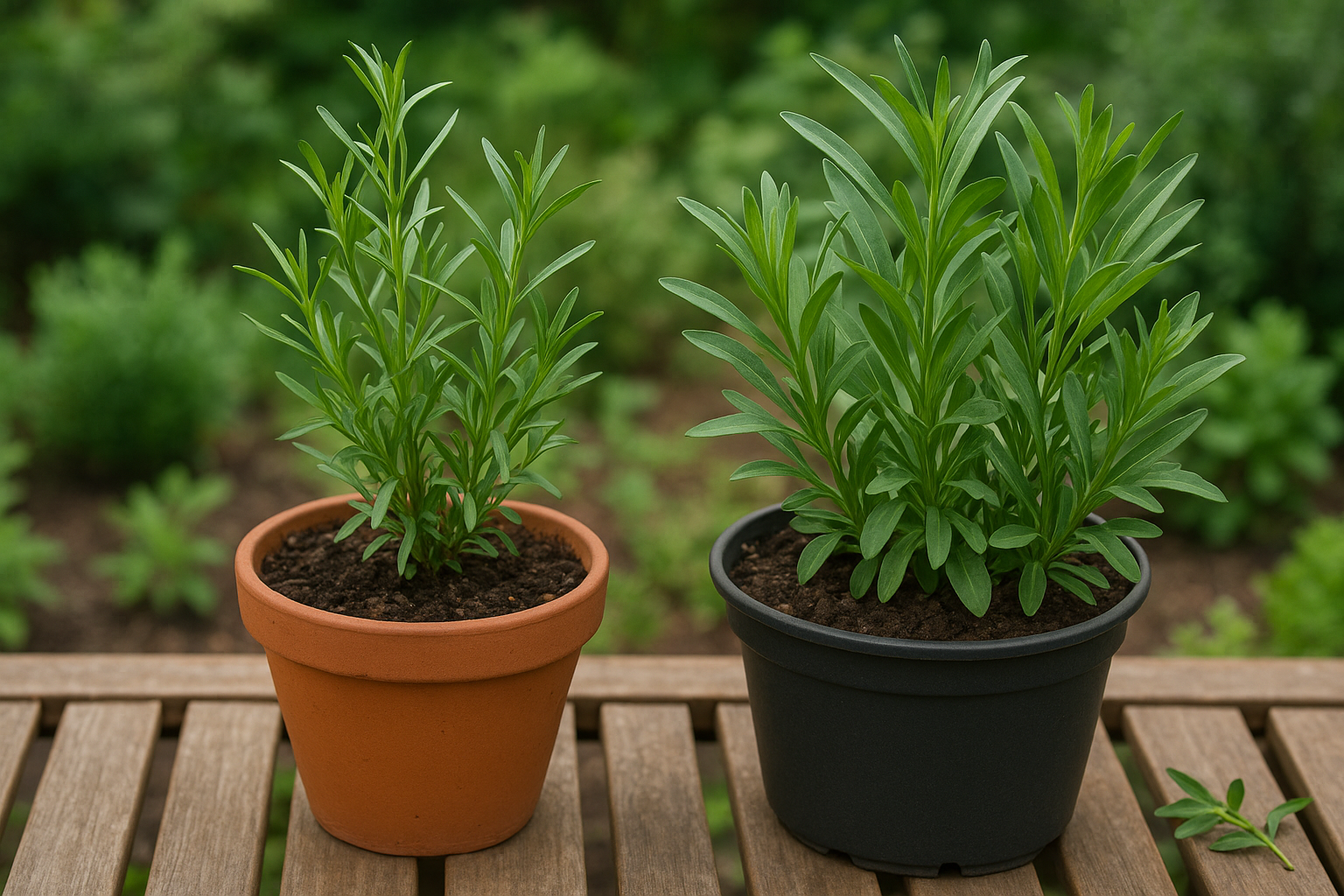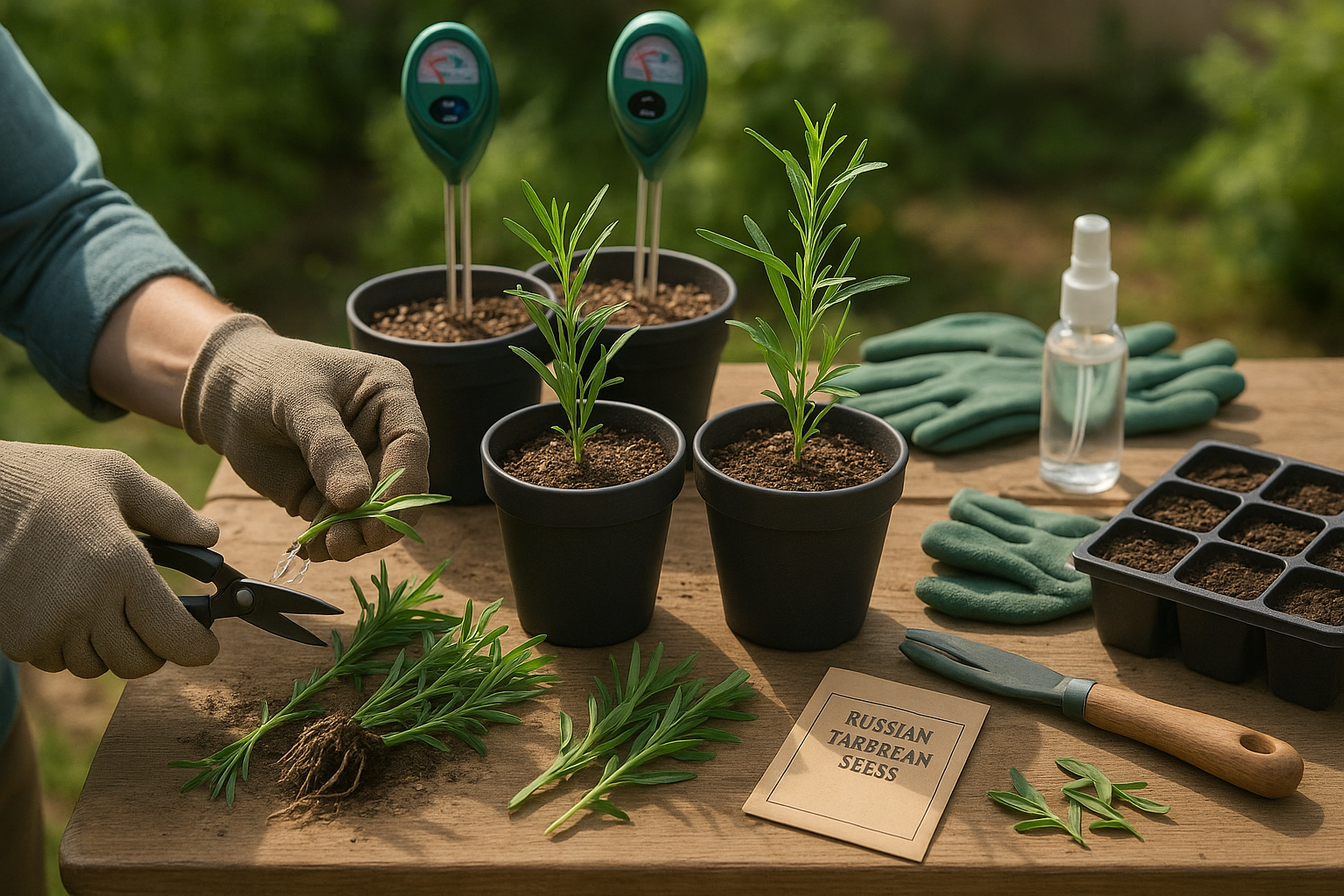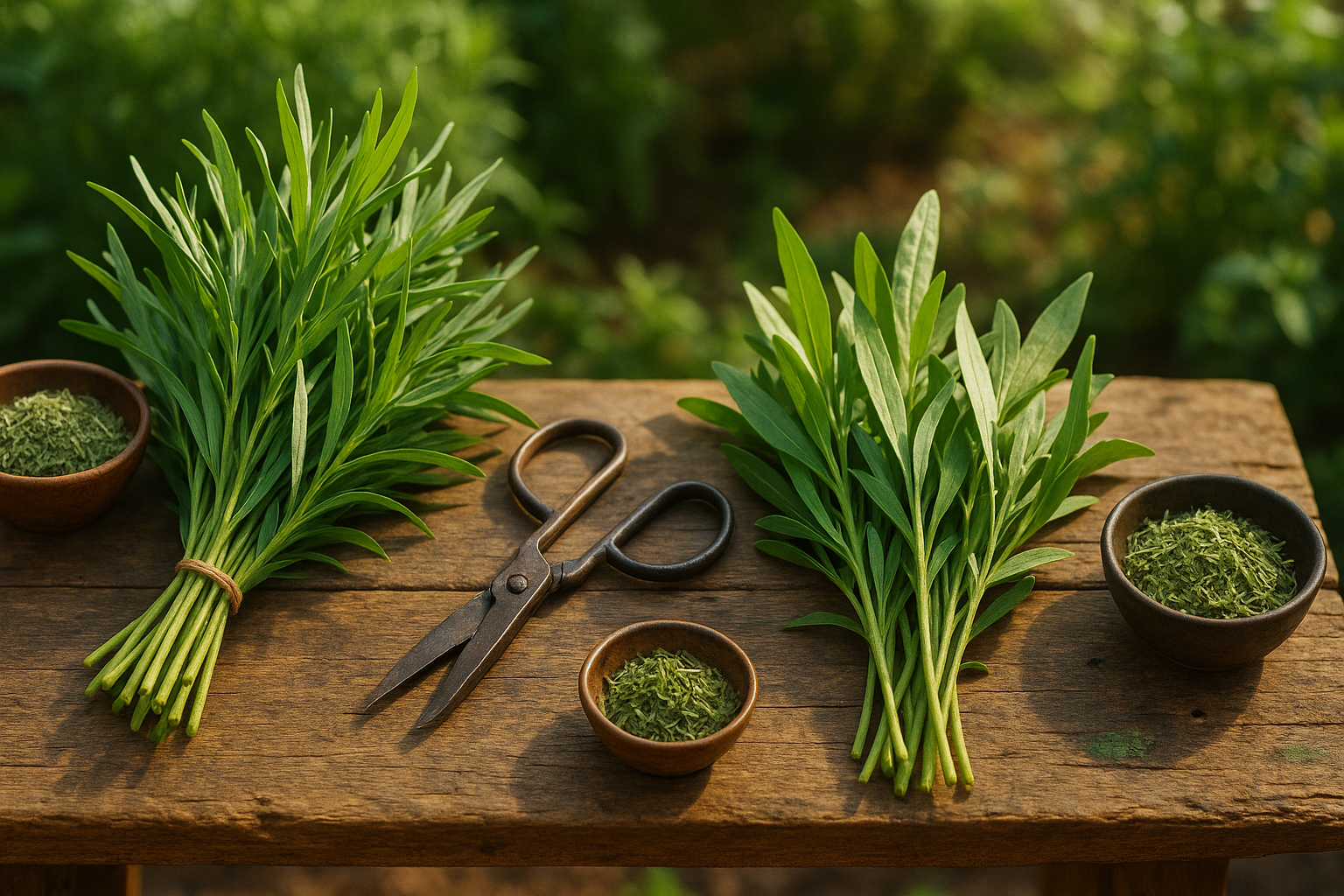Overview of Tarragon Varieties

Tarragon is a prized culinary herb, celebrated for its bright, anise-like flavor that elevates everything from classic Béarnaise sauce to simple roasted chicken. Its unique taste has made it a staple in French and Mediterranean cuisines, where even a small handful can transform a dish.
Among the different varieties, French tarragon (Artemisia dracunculus var. sativa) and Russian tarragon (Artemisia dracunculus) are by far the most commonly used—and frequently mistaken for one another. While both fall under the same Artemisia genus, their differences are significant both in the kitchen and the garden.
French tarragon, preferred by chefs, is prized for its subtle flavor, tender leaves, and inability to produce viable seeds, making propagation through cuttings essential. Russian tarragon, on the other hand, grows easily from seed, produces larger, coarser leaves, and often lacks the complexity and strength of flavor that sets French tarragon apart.
Being able to distinguish between them ensures you’re truly getting the flavor you want in your recipes. Up next, we’ll break down the telltale characteristics of each so you can confidently pick the right tarragon for your cooking and gardening needs.
Flavor and Culinary Uses
French tarragon stands out in the herb world for its distinct, anise-like flavor—fresh, sweet, and slightly peppery. It’s a chef favorite in classic French cuisine. You’ll often find it playing a starring role in béarnaise sauce, chicken tarragon, and as a subtle note in vinaigrettes or egg dishes. Its flavor is potent, so a little goes a long way, making it perfect for fine dining and delicate recipes where you want a whisper of complexity rather than a herbal punch.
Russian tarragon, by contrast, is less pronounced, with a much milder, at times grassy or even slightly bitter taste. It lacks the signature licorice notes of its French cousin. This variety is commonly used in hearty, rustic Eastern European dishes like pickles, salads, and stews, where its gentler profile complements robust ingredients.
For home cooks, choosing between the two depends on the dish:
- Opt for French tarragon when you want a burst of aromatic flavor—think elegant sauces, seafood, or roast chicken.
- Reach for Russian tarragon in recipes where you want a subtle herbal hint without overpowering other flavors, such as in potato salads or simple soups.
If you need to substitute one for the other, keep these tips in mind:
- Russian tarragon won’t bring the same complexity as French—try doubling the amount, but expect a less vibrant taste.
- When swapping in French tarragon for Russian, use it sparingly, as its stronger flavor could dominate the dish.
In both cases, add tarragon towards the end of cooking to preserve its delicate essence. Fresh is always best, but if you have to use dried, cut the amount by half, as the flavor is concentrated but never quite matches the fresh experience.
Growing and Care Differences

French and Russian tarragon may share a name, but their growing preferences and care needs are quite different. French tarragon (Artemisia dracunculus ‘Sativa’) thrives in mild climates with well-draining, sandy or loamy soil, and doesn’t tolerate cold—it’s only hardy to about USDA zone 6. It loves full sun but benefits from some afternoon shade in very hot regions.
Russian tarragon (Artemisia dracunculoides), in contrast, is much hardier (zones 3-8), tolerates poorer soils, and grows well even in colder climates or less-ideal conditions.
Propagation
Propagation is also notable: French tarragon rarely sets viable seed, so you’ll need to propagate it from root divisions or stem cuttings, while Russian tarragon easily grows from seed, making it simpler for beginners.
Soil and Watering
Both types dislike overly wet soil, so be sure not to overwater, especially if growing in pots. Always use containers with drainage holes and avoid saucers that trap water.
Care Tips
- French tarragon: Requires a bit more fuss, with extra care to avoid root rot and woody stems. Trim it regularly for bushy growth and replace plants every 3-4 years as they become less productive.
- Russian tarragon: Easier to maintain, but produces a less refined flavor and tends to self-seed (sometimes aggressively) in the garden.
Growing Locations
For pots, choose a sunny windowsill for French tarragon or a patio for Russian tarragon, and use a quality herb mix. In the garden, select raised beds or slopes for good drainage.
Pest and Disease Watch
Watch for stem rot, powdery mildew, and aphids on either type.
With a bit of attention to their preferences, both can thrive at home, rewarding you with fresh, aromatic leaves for cooking.
How to Buy and Store Tarragon
When shopping for tarragon, you’ll likely find both French and Russian varieties. French tarragon, prized for its sweet, anise-like flavor, is best found at local farmers’ markets, well-stocked supermarkets, or online specialty herb shops—always check labels to confirm the variety. Russian tarragon, while slightly bitter and less aromatic, may turn up at farmers’ stalls or gardening centers, often marketed as a more robust plant for home growing.
When picking fresh tarragon, look for bright green, slender leaves with no signs of yellowing or wilting; the aroma should be strong and reminiscent of licorice. Dried tarragon is available in most grocery stores—choose jars that specify ‘French’ for better flavor, and check that the dried leaves retain a green color rather than turning dull or brown.
To keep fresh tarragon at its best, wrap the stems in a damp paper towel, seal in a plastic bag, and refrigerate for up to a week—or stand the stems in a glass of water like a bouquet, loosely covered with a plastic bag. For dried tarragon, store the herb in an airtight container away from heat and light, and aim to use it within six months for optimum taste.
Nutritional Value and Health Benefits
French and Russian tarragon may look similar, but their nutritional profiles and health benefits differ. French tarragon is prized for its vibrant flavor and contains small amounts of essential vitamins like A and C, along with antioxidants that help fight free radicals in the body. Russian tarragon, while less aromatic, grows more robustly and tends to have slightly more vitamin C. Overall, both varieties are very low in calories—a fresh tablespoon has barely five calories.
Traditionally, both types have been used in herbal medicine: French tarragon was known for aiding digestion, soothing toothaches, and even acting as a mild sleep aid, while Russian tarragon was used to improve appetite and support heart health. More recent studies suggest tarragon may help regulate blood sugar and fight inflammation thanks to its antioxidant compounds.
However, it’s wise to use tarragon in moderation. The essential oil of French tarragon contains estragole, a compound which, in large quantities, may be linked to health risks—so avoid concentrated extracts or consuming excessive amounts, especially during pregnancy or if you have liver conditions. As with any herb, tarragon may trigger allergies in sensitive individuals or interact with anticoagulant medications, so consult a healthcare provider if you have concerns.
Quick Reference
Choosing between French and Russian tarragon depends on your taste buds, cooking habits, and gardening goals. French tarragon is known for its sweet, anise-like flavor, making it the go-to herb in classic French dishes like Béarnaise sauce and chicken tarragon. Its leaves offer a subtle but complex taste that shines in light dishes, salad dressings, and herbal vinegars.
The downside is that French tarragon can be a bit fussy in the garden—it dislikes soggy soil and rarely sets seeds, so you’ll need to buy established plants. Russian tarragon, on the other hand, is hardier and easier to grow, tolerating a range of climates and conditions. However, its flavor is much milder and somewhat grassy, so it’s better suited for bulkier uses like big-batch stews or as a decorative edible.
Here’s a quick comparison:
- French tarragon: Best for gourmet cooking and precise flavors.
- Russian tarragon: Best for easy gardening and mild herbal notes.
No matter which you choose, the best way to decide is to taste both in a simple recipe, like chicken salad or vinaigrette, and see which one elevates your cooking style. Experimenting is part of the fun!
